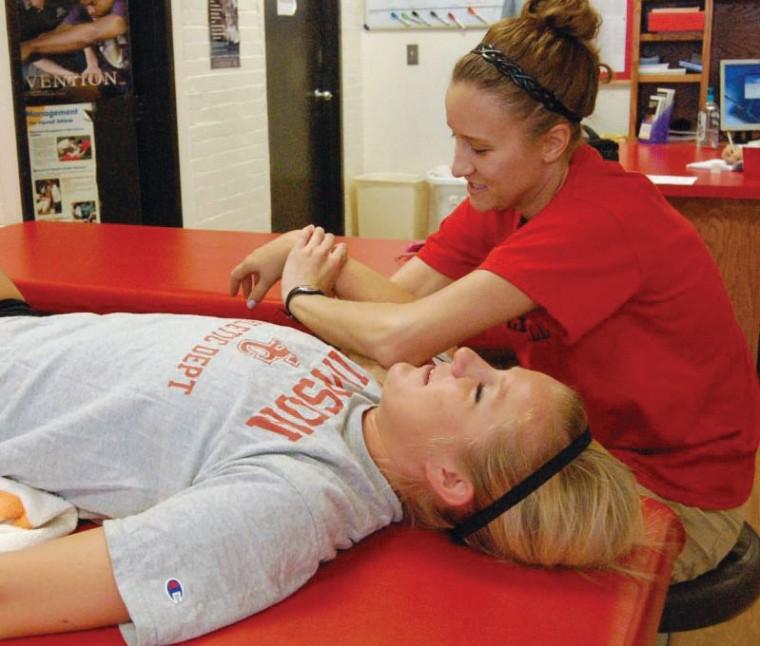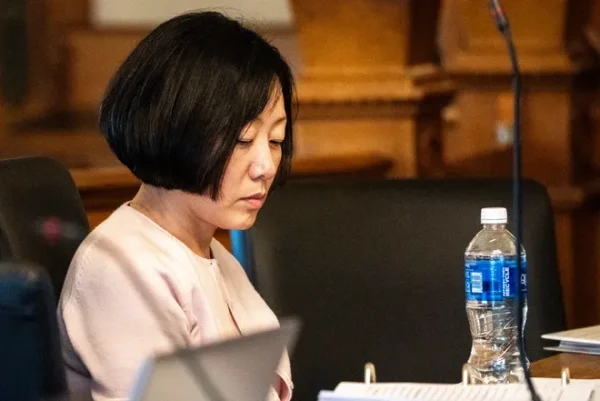The Silent Healers
October 22, 2010
Simpson’s collegiate athletes can rely on helpful and knowledgeable trainers and staff to see them through injuries.
With any strenuous physical activity comes the danger of something going wrong, especially so in high-contact sports like football. Luckily, Simpson has a staff that includes 40 student trainers, dedicated to keeping athletes in the game as much as possible while still maintaining good health for future competitions.
Mike Hadden, director of athletic training, deals extensively with student athlete rehabilitation. Commonly seeing such injuries as ankle sprains or shin splints, he knows how hard it is to keep an athlete from playing too soon or too intensely after an injury in order to keep an athlete from even more damage.
“The big question is always a return to participation,” Hadden said. “We always have to take into account safety; it’s a balancing act. They have to look at the big picture, make sure of what’s best for them and best for the team. Their decisions and what they want also affect the team.”
Nathan Trimble, a senior football player who suffered a torn ACL in Simpson’s first football game, trusts the trainers to get him back into the game safely and as soon as possible.
“The athletic trainers have really helped me through the whole process,” Trimble said. “They are helping me with early stages of rehab, some basic exercises and also helping me reduce swelling through icing and other techniques. Above all, they acted like a brake pedal for me; when I wanted to go too fast or do something that might jeopardize the integrity of my knee they were there to tell me no.”
Trimble believes Simpson’s program will lead to him recovering faster and more efficiently than he would have otherwise.
“I am sure that my recovery will be much faster since all my rehab will be at school and they can dedicate good time to me,” Trimble said. “I can say from talking to others who have had the same injury that they do an excellent job in helping student athletes recover. Mike Hadden and his staff really know their stuff.”
Lauren Anderson, a senior and athletic trainer here at Simpson, shared what some of the treatments for athletic injuries entail.
“Helping a student athlete recover from an injury can be as simple as applying ice and an ace wrap,” Anderson said. “Others require much more attention and we develop a rehabilitation program for them that consists of exercises appropriate for their degree of injury and stage of healing. We help the certified athletic trainers determine when it is safe for the athlete to return to play.”
Simpson’s training and rehabilitation program definitely has Anderson’s endorsement as well, though she knows it could use help as it continues expanding.
“I transferred to Iowa State my junior year, but ended up coming back the next semester,” Anderson said. “I had greater hands on experience and one-on-one time with our certified (athletic trainers) here than I had at ISU. While our program does an incredible job, we do need help. We have had an increase in the number of athletes and athletic training students at Simpson, but to my knowledge no increase in budget or staff.”
The health of Simpson’s athletes is important, and here at Simpson there is a core of people dedicated to doing their best to see them through.
“Coming to the athletic training room before going to the doctor can save the athlete playing time and money,” Anderson said. “We can help you decide if a doctor visit is necessary and can usually get you back to competition sooner.”













